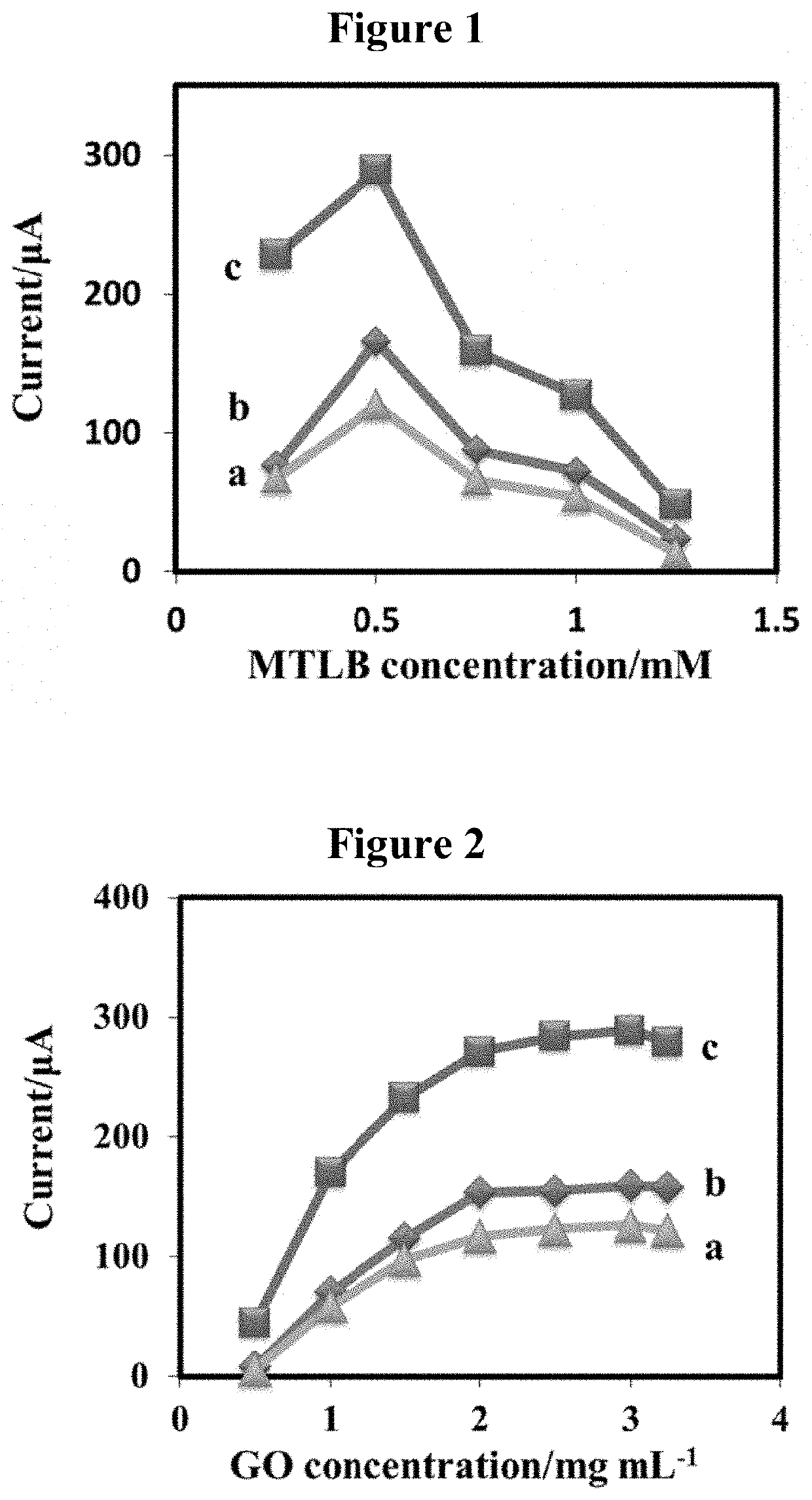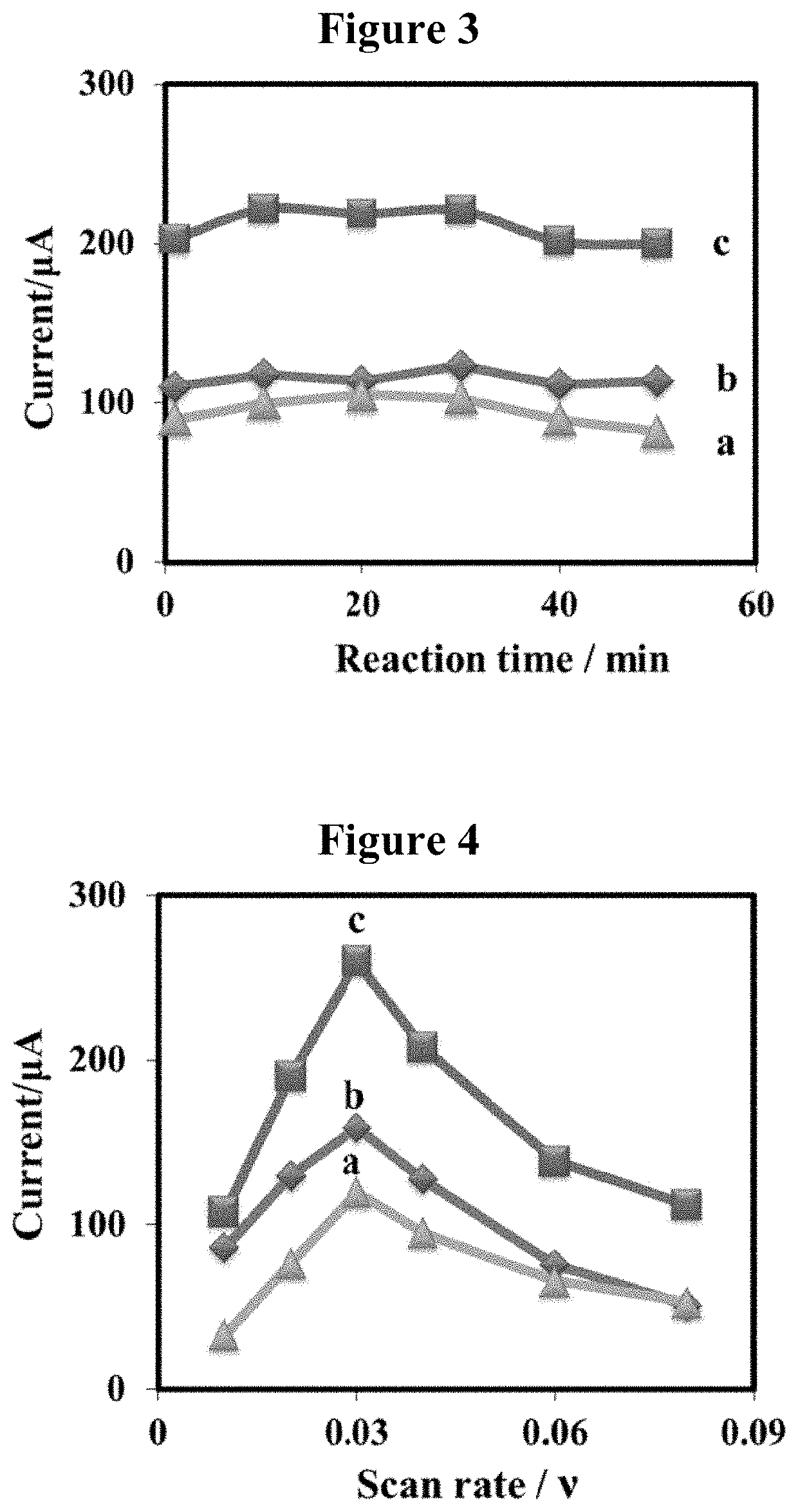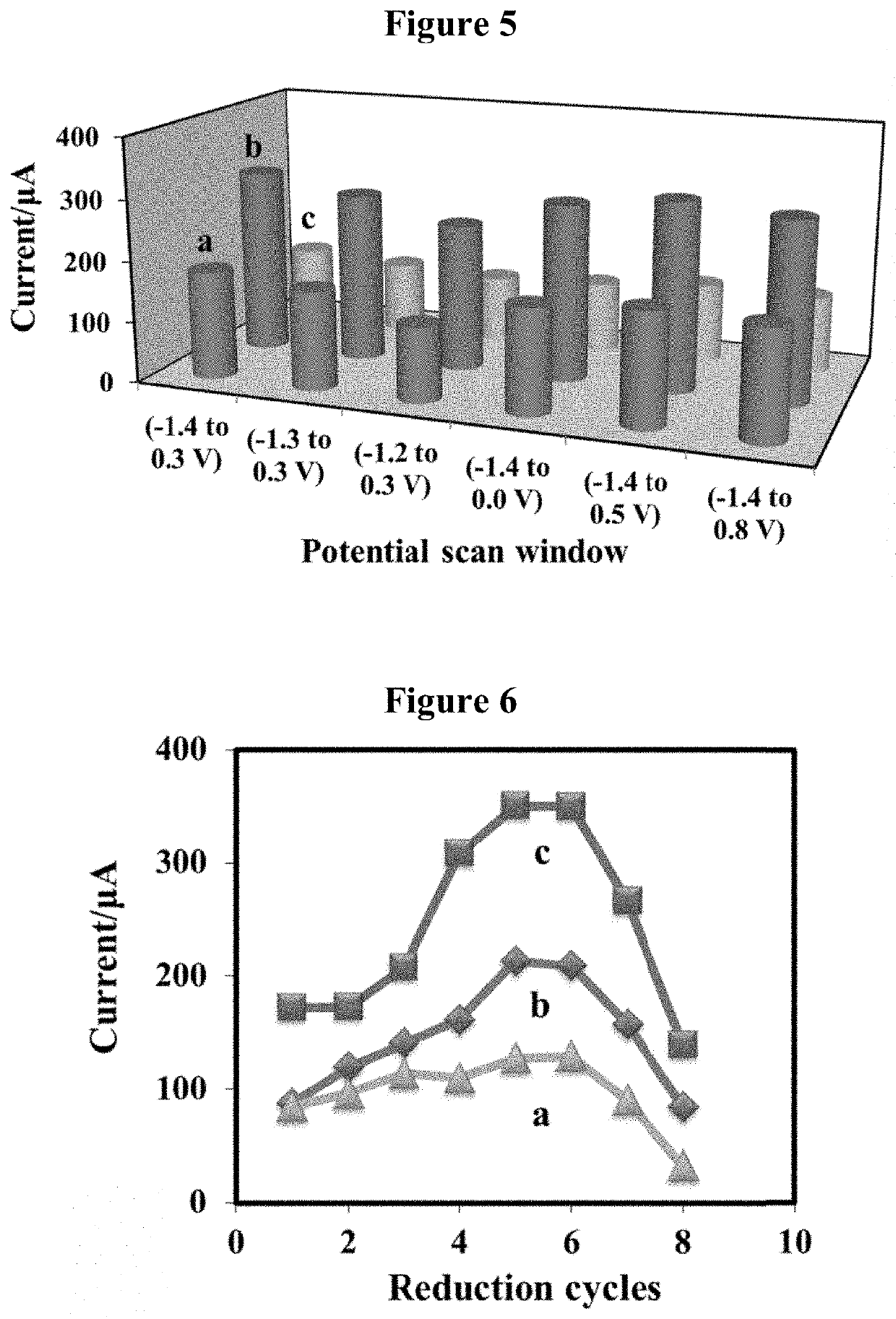Nanostructured graphene-modified graphite pencil electrode system for simultaneous detection of analytes
a graphite pencil and analyte technology, applied in the field of graphite pencil electrodes, can solve the problems of sensitivity, selectivity, cost, etc., and achieve the effects of less effect on l-tyrosine, improved sensor sensitivity, and great affinity
- Summary
- Abstract
- Description
- Claims
- Application Information
AI Technical Summary
Benefits of technology
Problems solved by technology
Method used
Image
Examples
example 1
Materials and Methods
[0110]Sodium phosphate monobasic and dipotassium hydrogen phosphate were obtained from BDH (U.K). Ascorbic acid, L-methionine, dopamine, uric acid, L-tyrosine, glucose, fructose, sodium, and potassium chloride were purchased from Sigma-Aldrich (U.S.A). Alanine and phenylalanine were acquired from Fluka (U.S.A). All reagents were prepared with double distilled acquired from the Water Still Aquatron A 4000D (England).
[0111]Raman and FTIR spectra were obtained on HORIBA Scientific LabRAM HR Evolution and NICOLET 6700 FT-IR spectrometer, respectively. The electrochemical measurements were carried out using Auto Lab (Netherland), consisting of three electrode system. The working electrodes were GPE, GR / GPE, MTLB / GPE or MTLB-GR / GPE, the counter electrode was platinum, and the reference electrode was Ag / AgCl. TESCAN LYRA 3instrument was used for recording of FE-SEM images. The pH and weight measurements were determined by Accumet® XL50 pH meter and GR-2000, respectivel...
example 2
Electrode Modification Procedure
[0112]Pencil electrodes were modified with graphene oxide (GO) or methylene blue (MTLB)-GO. Prior to modification, GO (2 mg / mL) or a mixture of 0.5 mM MTLB and 2 mg / mL GO were dispersed in double distilled water. The MTLB-GO was reduced on the GPE surface by sweeping electrode potential from −1.4 to 0.5 V over five cycles using scan rate 0.03 Vs−1. The modified surface was gently washed by dipping twice in double distilled water before analysis to remove adsorbs MTLB-GO from the surface.
example 3
Performance Enhancement of MTBL-GR-GPE Electrode
[0113]GPE is a cost-effective electrode sensor, but it has a drawback related to its surface sensitivity similar to other bare electrodes. In the instant invention, the surface sensitivity was improved by direct electrochemical reduction of MTLB-GO composite on the GPE surface. In order to achieve the 3D architecture of a vertical multiwalls network forming concave structures with improved sensitivity, the reaction conditions leading to the formation of the modified electrode were examined.
[0114]FIGS. 1 and 2 are plots of oxidation peak current response of dopamine, uric acid, and L-tyrosine obtained with electrodes prepared at different concentrations MTLB and GO, respectively. The sensor response was observed for the simultaneous sensing of dopamine, uric acid, and L-tyrosine. A GPE prepared from a solution of MTLB and GO at concentrations of 0.5 mM and the 2 mg / mL, respectively (see FIGS. 1 and 2), provided a strong response.
[0115]T...
PUM
 Login to View More
Login to View More Abstract
Description
Claims
Application Information
 Login to View More
Login to View More - R&D
- Intellectual Property
- Life Sciences
- Materials
- Tech Scout
- Unparalleled Data Quality
- Higher Quality Content
- 60% Fewer Hallucinations
Browse by: Latest US Patents, China's latest patents, Technical Efficacy Thesaurus, Application Domain, Technology Topic, Popular Technical Reports.
© 2025 PatSnap. All rights reserved.Legal|Privacy policy|Modern Slavery Act Transparency Statement|Sitemap|About US| Contact US: help@patsnap.com



